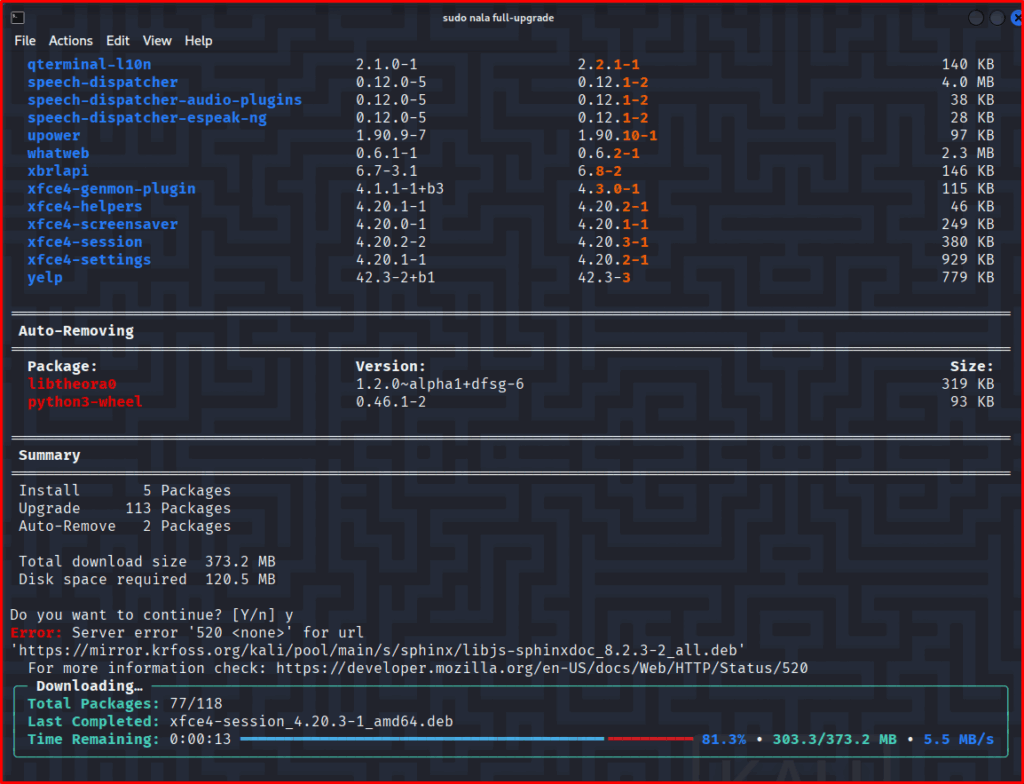Introduction
For decades, Debian and its derivatives such as Ubuntu, Linux Mint, and Pop!_OS have relied on the tried-and-tested APT (Advanced Package Tool) as their default package manager. While APT is reliable and powerful, its user interface and output formatting can feel a bit outdated, especially compared to modern package managers like dnf or pacman.
Enter Nala — a sleek and user-friendly frontend for APT. Written in Python, Nala improves the package management experience by offering faster parallel downloads, cleaner output formatting, and improved dependency handling. For engineers who spend a significant amount of time managing packages, Nala can be a real productivity booster.
Installation
Installing Nala is straightforward. It is available in most Debian-based distributions via their repositories, though in some cases you may want to add the official Nala repository for the latest version.
On Debian (11/12) and Ubuntu (20.04+)
sudo apt update sudo apt install nala -y
On older systems (if Nala isn’t available in the default repo)
You can fetch it from the Volian repository:
echo "deb [arch=amd64,arm64,armhf] http://deb.volian.org/volian/ scar main" | sudo tee /etc/apt/sources.list.d/volian-archive-scar.list sudo apt update sudo apt install nala -y
Once installed, you can start using Nala just like APT. For example:
sudo nala update sudo nala install htop sudo nala upgrade

Why Nala? The Pros
✅ Parallel Downloads – Nala can download multiple packages simultaneously, significantly speeding up installations and upgrades.
✅ Clean & Readable Output – Instead of APT’s verbose, sometimes confusing logs, Nala displays package information in a color-coded, structured format.
✅ Mirror Selection – Nala includes a nala fetch command that benchmarks mirrors and helps you choose the fastest ones for your location.
✅ APT Compatible – Nala is a wrapper, not a replacement. Anything you do with APT can also be done with Nala, making the transition risk-free.
✅ Improved Dependency Resolution View – Nala shows dependency trees in a clearer, more human-readable way.
The Cons
⚠️ You Still Need APT – Since Nala is just a frontend, it cannot exist without APT. In troubleshooting scenarios, you may still need to fall back to raw apt.
⚠️ Smaller User Base – APT has decades of battle-tested reliability; Nala is relatively new and less widely adopted, which means less community support.
⚠️ Not Pre-Installed – Unlike apt, you need to install Nala manually. Some minimal environments may not include it by default.
⚠️ Learning Curve for Some Commands – While Nala mirrors APT syntax, certain options and extra features (like mirror fetching) may require a bit of relearning.
Q&A Section
Q1: Does Nala replace APT?
No. Nala is a wrapper around APT, so APT is still required on your system.
Q2: Can I use APT and Nala interchangeably?
Yes. You can install or upgrade packages with either tool. They share the same backend.
Q3: Is Nala safe for production systems?
Yes. Since it leverages APT under the hood, it is as stable as using APT directly. Many engineers use it on both desktops and servers.
Q4: How much faster is Nala compared to APT?
On systems with good bandwidth and parallel download capability, upgrades can be noticeably faster, especially on large installations.
Q5: Should I uninstall APT after installing Nala?
No. APT is essential for Debian-based systems and should remain installed.
Final Thoughts
Nala isn’t about reinventing the wheel — it’s about making package management faster, cleaner, and more intuitive for Debian-based distributions. For seasoned Linux engineers, its value lies in time savings and readability. For newcomers, Nala makes package management less intimidating.
That said, it’s still a wrapper around APT, meaning it inherits APT’s strengths and weaknesses. If you’re comfortable with APT, Nala is an optional convenience. But once you try its parallel downloads and clean UI, it’s hard to go back.
If you want to modernize your Debian or Ubuntu package management experience, give Nala a try.




